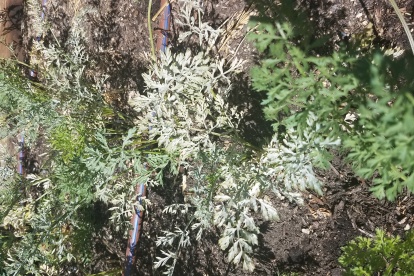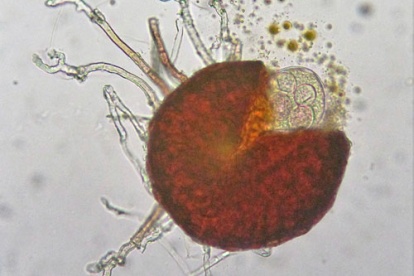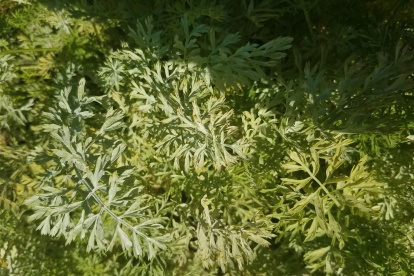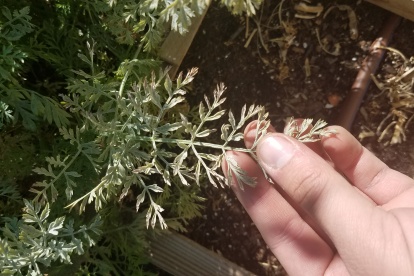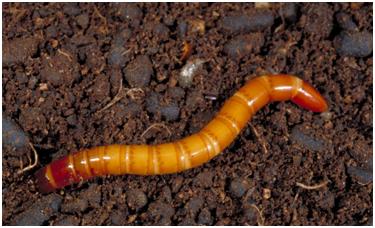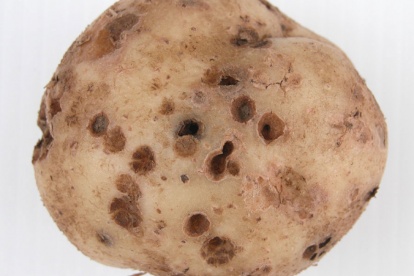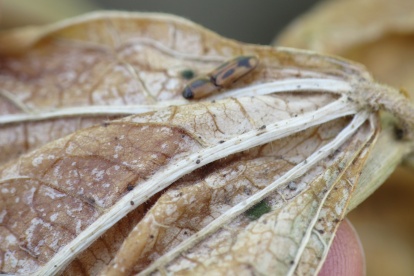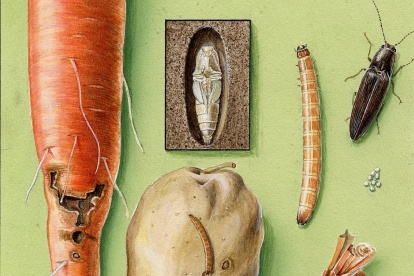In this issue:
- Powdery Mildew: Spotted on carrot plants in northern Utah
- Wireworms and Click Beetles: Wreaking havoc in potato patches
Powdery Mildew on Carrots
Overview
Powdery mildew on carrots is caused by the fungus Erysiphe heraclei. E. heraclei is a new disease that has been reported in both southern and northern Utah in recent seasons. This pathogen affects several plants in the Apiaceae family including dill, celery, parsnips, parsley, and carrots. Similar to other powdery mildews it thrives under dry conditions and warm temperatures. The mildew affects the foliage of carrots and can reduce photosynthesis, therefore reduce carrot yields.
Management
– If available, grow tolerant cultivars and maintain healthy plant vigor
– Organic sprays include sulfur and Bacillus subtilis based products.
– Fungicide sprays aren’t typically recommended this late in this season. It is best to identify the powdery mildew early on in the season.
Additional Resources
Powdery Mildew on Carrots (California IPM)
New Plant Diseases and Hosts in Utah Article (Utah Pests Quarterly Newsletter – Winter 2019)
Powdery Mildew on Carrots (Cornell University – Vegetable Pathology)
Wireworms in Potatoes
Overview
Wireworms (Limonius species) are distributed throughout the western United States from the Rocky Mountains to the Pacific Coast. Though plant injury from wireworms in Utah is uncommon, there have been reports in various potato patches. The wireworm is the larvae stage of a click beetle, which has also been present amongst potatoes. Adult click beetles are range from 8-12 mm and are generally dark brown to black in color. The wireworms are elongate-cylindrical measuring 18-21 mm, they are segmented and are a shiny yellow-brown color. Depending on the specific species and location a wireworm lifecycle can range from 1-5 years. Along with potatoes, larvae can also damage cantaloupe, cauliflower, corn, lettuce, beans, and other crops with tubers or substantial root systems.
Damage
Wireworms will predominately damage irrigated crops, especially in raised beds gardens. Early signs of an infestation can display seedling death and stand reduction. In older plants, root and tuber damage can be considerable. Wireworms will tunnel deeply into potato tubers which can leave them susceptible to other pathogens.
Management
– Crop rotation can disrupt overwintering stages
– Allow soil to dry out, especially in raised beds
– Remove dead plants and tubers throughout the season and at harvest
– Click here to view Commercial Insecticide options for Potatoes
Additional Resources
Wireworms (Utah Vegetable Production & Pest Management Guide)
Wireworms (Rutgers – New Jersey Extension)
Wireworms (Oregon State Extension)

